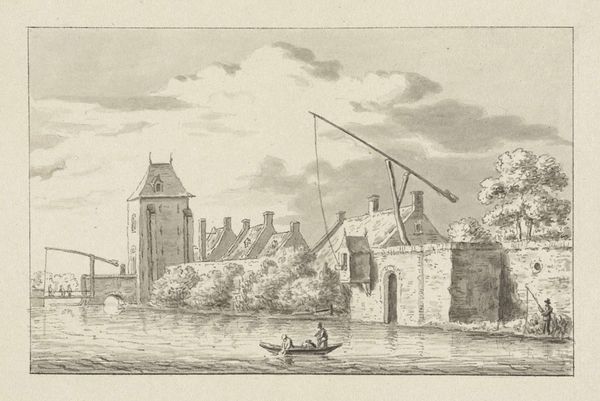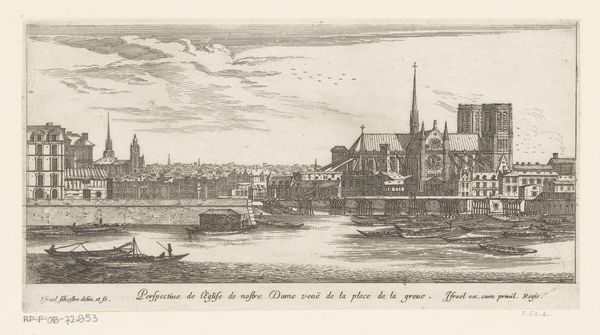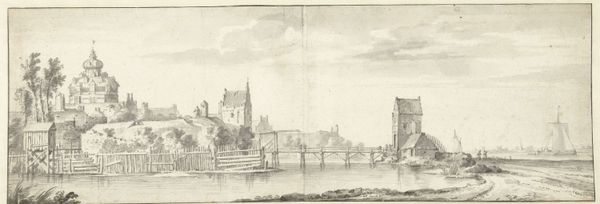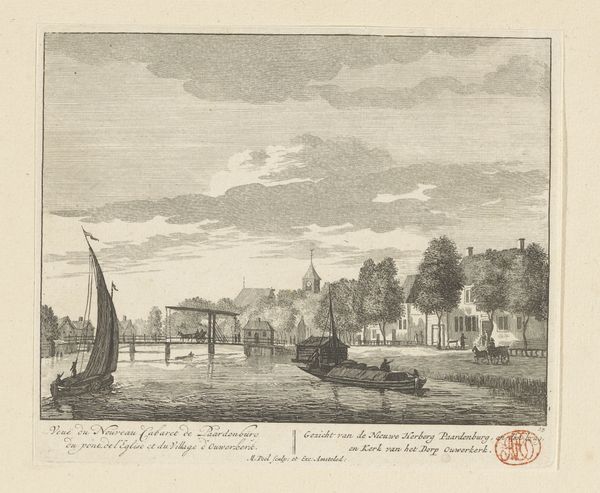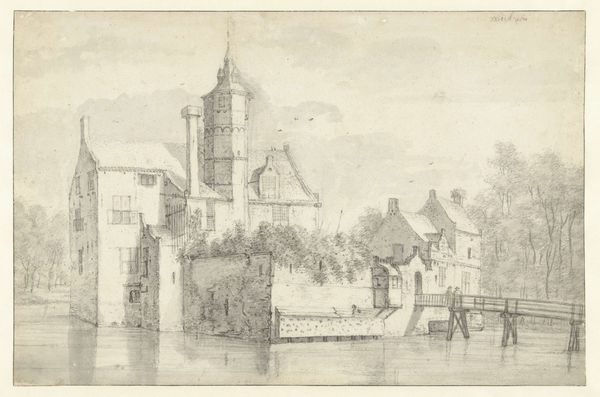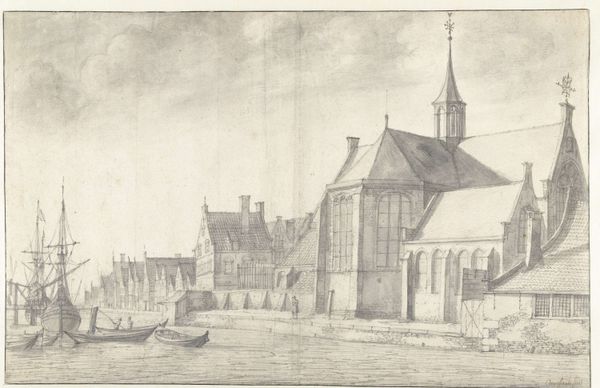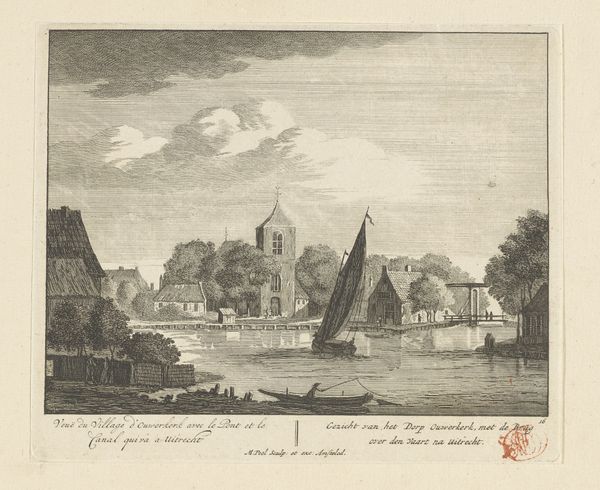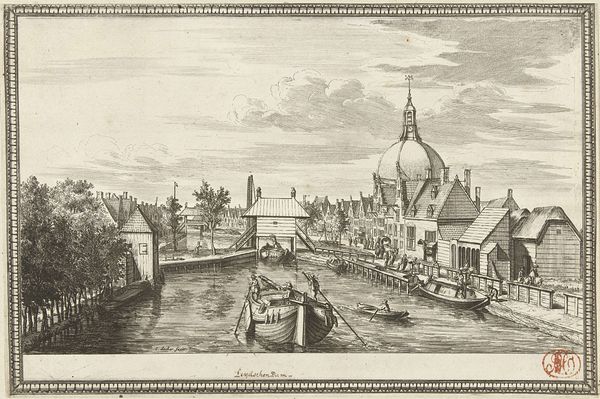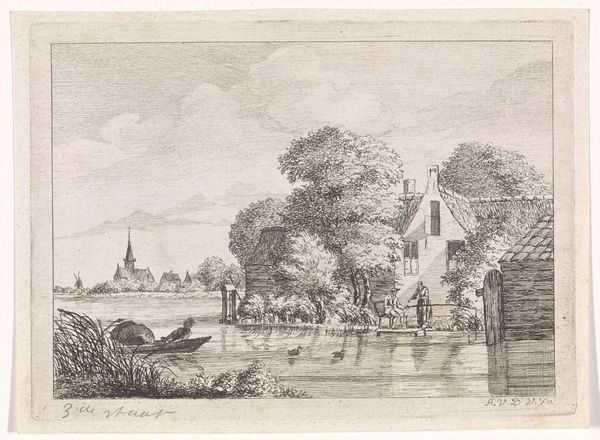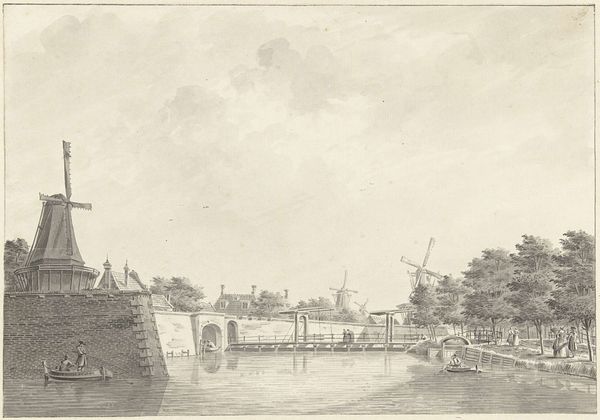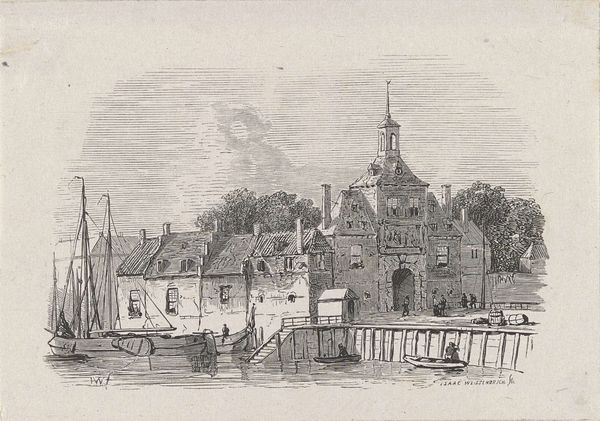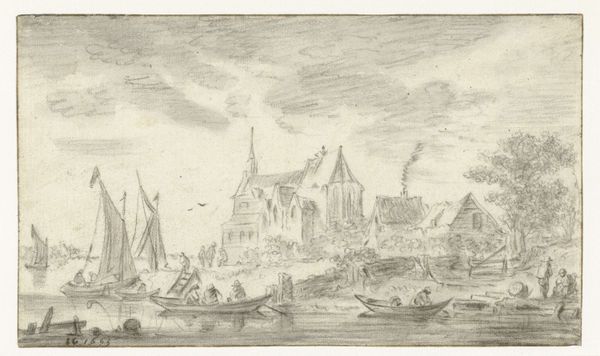
drawing, paper, ink
#
drawing
#
baroque
#
dutch-golden-age
#
landscape
#
perspective
#
paper
#
ink
#
cityscape
Dimensions: height 232 mm, width 370 mm
Copyright: Rijks Museum: Open Domain
Curator: This is Cornelis Pronk’s "De stadswal van Rotterdam bij de Oostpoort," likely created sometime in the first half of the 18th century. Editor: There’s a striking calmness. The monochrome palette really brings a quiet, almost melancholic mood to this depiction of Rotterdam. Curator: The work reflects Pronk's engagement with representing urban spaces. As part of a broader trend in the Dutch Golden Age, there's an emphasis here on the civic and social environment. Notice how the "stadswal," the city rampart, blends into the domestic architecture? Editor: Right, and the paper and ink themselves invite closer examination. Look at the way the artist uses line work to differentiate texture, to create an illusion of depth… I wonder about Pronk's technique here – what sort of nib was he using? And how did the availability and cost of paper influence the scale and detail of works like this? Curator: It’s interesting you bring up materials. Consider the broader context – the Dutch Golden Age and its flourishing trade networks enabled wider access to these very materials, which subsequently shaped artistic practice and styles. Editor: Exactly, the material conditions allowed artists to iterate styles such as those prevalent in Dutch Golden Age, contributing to this cityscape style. Also, these ramshackle, almost improvised structures near the water...were these temporary structures associated with the maintenance of the wall and harbor? Curator: It's likely many of those are related to trade and harbour activity, definitely underscoring the dynamism of Rotterdam's growth at the time. Editor: The perspective almost centers the waterways rather than buildings; it is a portrait of trade made from ink and paper. What an elegant, subtle reminder of how material realities shape a city’s identity. Curator: I appreciate how that point highlights the role images play in shaping our understanding and cultural narrative of urban space, particularly in periods of rapid transformation. Editor: Absolutely. Considering these production elements offers fresh insight into art’s dialogue with society and history.
Comments
No comments
Be the first to comment and join the conversation on the ultimate creative platform.

